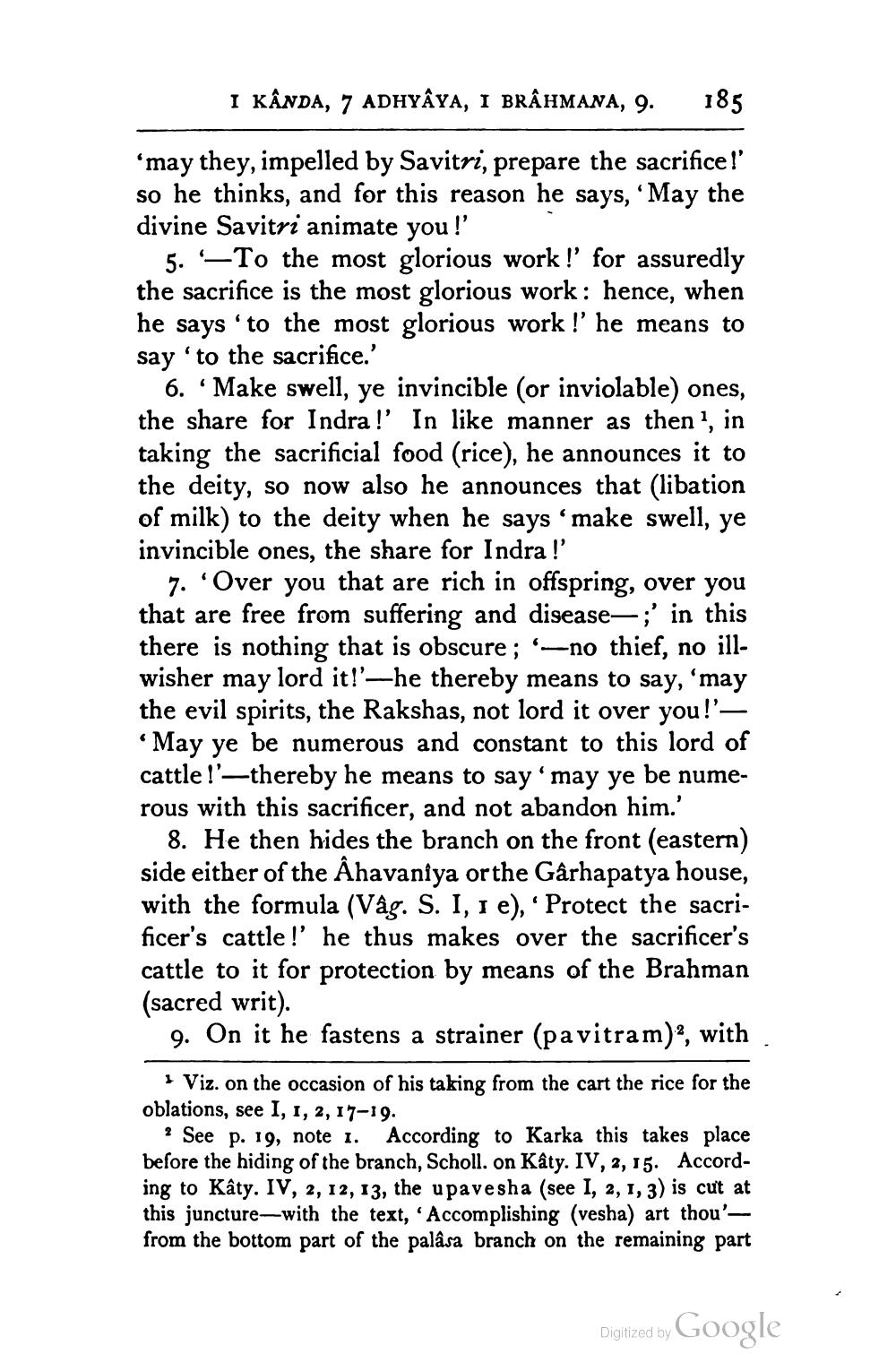________________
I KÂNDA, 7 ADHYÂVA, I BRÂHMANA, 9.
185
'may they, impelled by Savitri, prepare the sacrifice!' so he thinks, and for this reason he says, “May the divine Savitri animate you !
5. –To the most glorious work!' for assuredly the sacrifice is the most glorious work: hence, when he says 'to the most glorious work !'he means to say to the sacrifice.'
6. 'Make swell, ye invincible (or inviolable) ones, the share for Indra!' In like manner as then, in taking the sacrificial food (rice), he announces it to the deity, so now also he announces that (libation of milk) to the deity when he says 'make swell, ye invincible ones, the share for Indra!
7. 'Over you that are rich in offspring, over you that are free from suffering and disease-;' in this there is nothing that is obscure; -no thief, no illwisher may lord it!'-he thereby means to say, 'may the evil spirits, the Rakshas, not lord it over you!'* May ye be numerous and constant to this lord of cattle !'—thereby he means to say 'may ye be numerous with this sacrificer, and not abandon him.'
8. He then hides the branch on the front (eastern) side either of the Ahavaniya or the Gârhapatya house, with the formula (Vág. S. I, 1 e), ‘Protect the sacrificer's cattle!' he thus makes over the sacrificer's cattle to it for protection by means of the Brahman (sacred writ).
9. On it he fastens a strainer (pavitram), with
· Viz. on the occasion of his taking from the cart the rice for the oblations, see I, 1, 2, 17-19.
? See p. 19, note 1. According to Karka this takes place before the hiding of the branch, Scholl. on Kâty. IV, 2, 15. According to Kâty. IV, 2, 12, 13, the upavesha (see I, 2, 1, 3) is cut at this juncture—with the text, 'Accomplishing (vesha) art thou'from the bottom part of the paläsa branch on the remaining part
Digitized by Google




